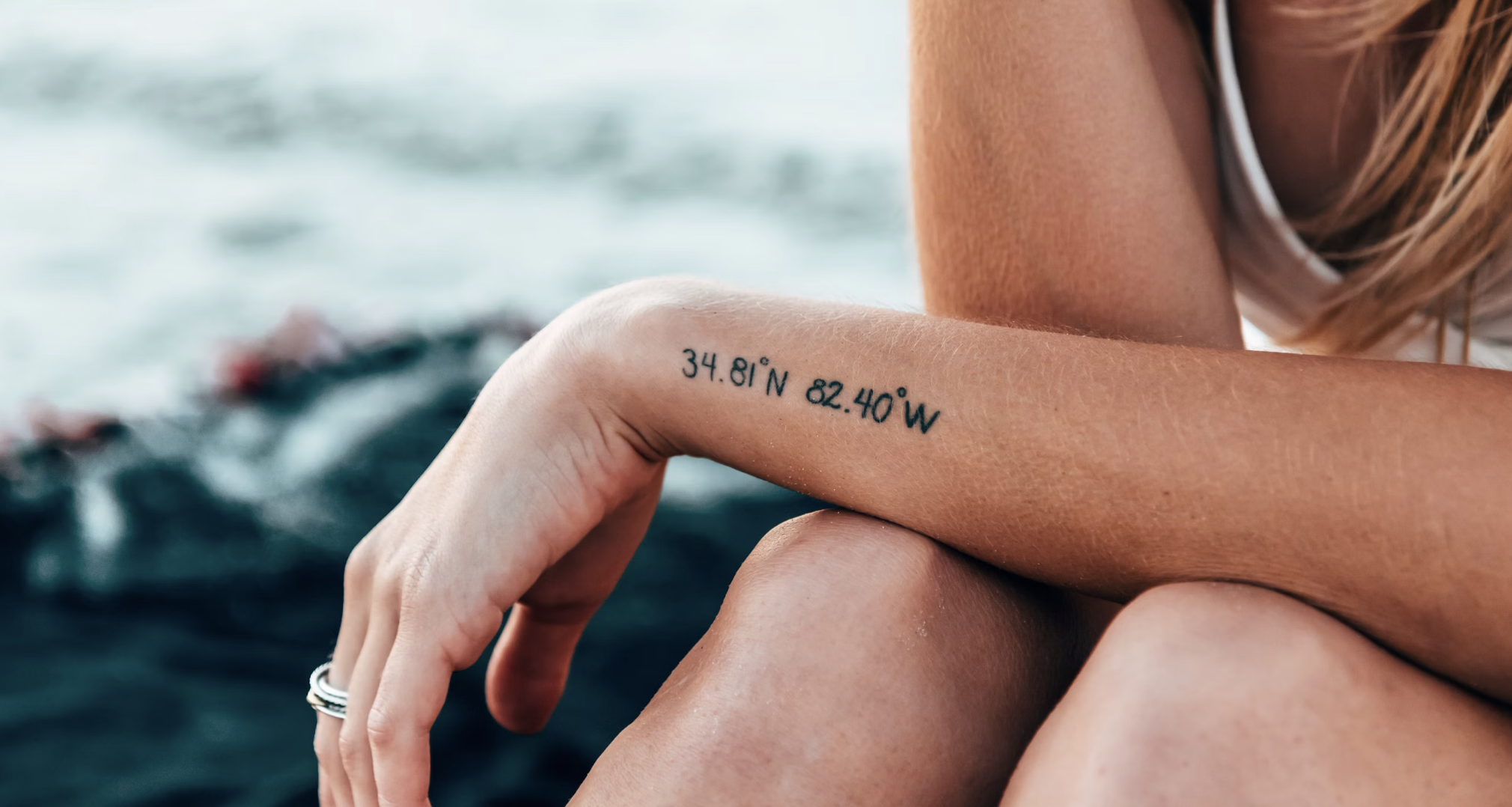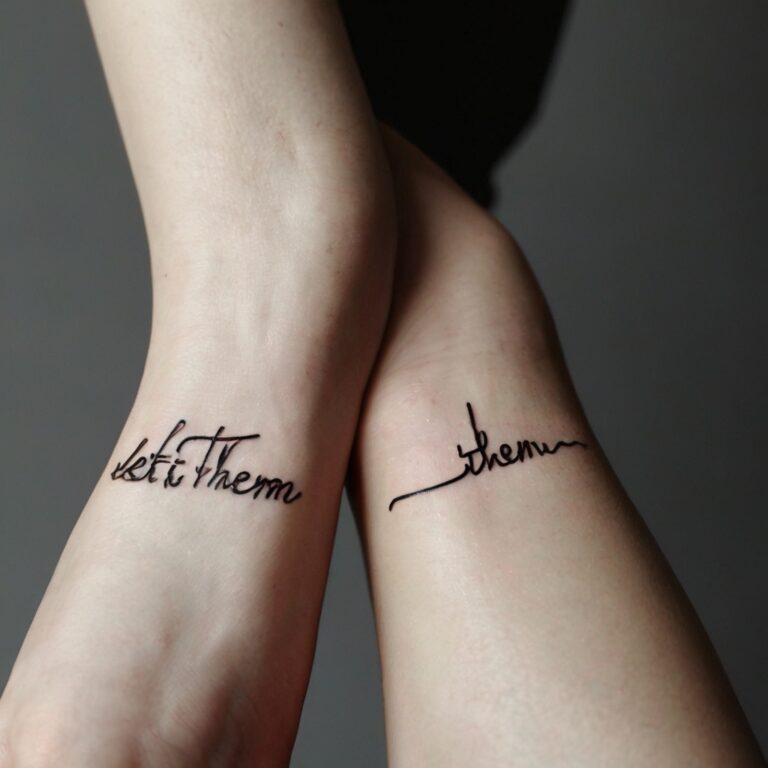Transforming your scars into art is more than just a trend; it’s a powerful form of self-expression and healing. If you’re considering covering a scar with a tattoo, you’re not alone. Many have found solace and beauty in turning their marks into masterpieces.
Choosing to tattoo over a scar can be a deeply personal decision, one that symbolizes strength, resilience, and rebirth. It’s a journey from embracing your past to creating a future where your scars tell a story of victory. With the right artist and approach, your scar can become your canvas for something truly beautiful.
Key Takeaways
- Tattooing over scars is a powerful form of self-expression and healing, enabling individuals to reclaim their body and narrative by transforming scars into meaningful art.
- Choosing the right tattoo artist is critical for covering scars, as scar tissue behaves differently than unscarred skin. It’s important to find an artist experienced in working with scar tissue and who understands your vision and healing journey.
- Understanding the healing process for tattoos over scars is essential, as scar tissue may affect healing times and ink retention. Proper aftercare, including keeping the area clean and avoiding direct sunlight, ensures optimal healing.
- Design considerations play a crucial role in tattooing over scars. The design should not only cover the scar but also integrate it into the artwork, with choices like bold colors, intricate patterns, or meaningful symbols to best suit the individual’s story and the scar’s characteristics.
- Long-term care of a tattooed scar is paramount for maintaining the vibrancy and health of the tattoo. This includes regular moisturizing, protection from the sun, and monitoring for any changes or reactions in the tattooed area.
- Inspiring stories of people who have tattooed over their scars highlight the transformative power of such tattoos in reclaiming self-image and narrative, emphasizing the significance of finding an artist who aligns with the emotional and aesthetic goals of the tattoo.
Why choose to tattoo over a scar?
Deciding to tattoo over a scar is a powerful step towards reclaiming your body and narrative. It’s more than just covering up; it’s about transforming your scars into something personally meaningful and beautiful. Here, we’ll explore why many are choosing this path of healing and self-expression.
Reclaim Your Story: Every scar has a story, but not all stories are ones you want to be reminded of daily. By choosing a tattoo, you’re essentially rewriting your narrative. You decide what your body displays and how you present your past experiences. This act of reclaiming can be profoundly empowering.
A Unique Form of Self-Expression: Tattoos are an art form, offering unlimited possibilities for creativity and self-expression. When you choose to tattoo over a scar, you’re not just hiding something; you’re replacing it with a piece of art that resonates with you. Whether it’s symbolic, a beautiful design, or something whimsical, it represents your resilience, strength, or even a newfound joy.
Psychological Healing: The psychological benefits of tattooing over scars shouldn’t be underestimated. For many, it marks the end of a chapter and the start of a new one. It can also significantly boost self-esteem and body image. Seeing a piece of art instead of a scar every day can change how you view yourself and your story.
A Personal Choice: Ultimately, the decision to tattoo over a scar is deeply personal. It’s a choice that symbolizes not only survival but also thriving. It’s about deciding how you want to heal and move forward. It’s important, however, to ensure that the scar is fully healed and to consult with a professional tattoo artist who has experience in working with scarred skin.
Finding the right artist is crucial, as they can offer advice on design options and explain what works best for scar tissue. They can help you turn a part of your body you might feel uneasy about into something you’re proud to show off.
Finding the right tattoo artist
When embarking on your journey to cover a scar with a tattoo, it’s crucial that you find an artist who not only understands your vision but also has specific experience with scarred skin. Scar tissue behaves differently than unscarred skin, and not every artist will have the skill set to tackle the nuances involved.
Start by researching artists who specialize in tattooing over scars or those who have a comprehensive portfolio that includes similar work. Social media platforms and tattoo forums are excellent places to begin. Look for before and after photos of their work on scarred skin to gauge their expertise.
- Experience: Years of experience working with all types of scars.
- Portfolio: A strong portfolio that showcases versatility and skill in covering scars.
- Comfort: An artist who listens to your story and makes you feel comfortable.
- Knowledge: Insight into how different scars absorb ink and what designs work best.
Once you’ve narrowed down your options, don’t hesitate to reach out for consultations with your chosen artists. These meetings are your opportunity to ask questions, discuss potential designs, and understand their approach to working on scarred skin. Pay attention to the artist’s willingness to work with you to achieve the desired outcome and their suggestions for ensuring the best results.
Remember, covering a scar with a tattoo is as much about the journey as it is about the final artwork. You’re not just looking for a tattoo artist; you’re seeking a collaborator who understands the significance behind your decision. Whether it’s to reclaim your body, tell a new story, or simply beautify a part of you, finding the right artist is a crucial step in turning your vision into reality.
Understanding the healing process
When you opt for a tattoo over a scar, understanding the healing process is crucial. This part of your journey involves patience and care, both for the art and the skin beneath it. Healing time may vary, depending on the size and location of your tattoo and the nature of the scar tissue.
Initially, expect some swelling, redness, and tenderness. These are normal responses as your body works to repair the micro-damage from the tattoo needles. It’s important not to panic; these symptoms should subside within a few days. However, proper aftercare is essential to ensure your tattoo heals beautifully and your scar remains well-treated.
Aftercare guidelines generally include:
- Keeping the tattoo covered with a breathable bandage for the first few hours
- Washing the tattoo gently with fragrance-free soap and water
- Applying a thin layer of hypoallergenic lotion to keep the area moisturized
- Avoiding direct sunlight and refraining from swimming or soaking the tattooed area
It’s also vital to be mindful of the signs of infection, such as excessive redness, swelling that doesn’t subside, fever, or pus. If you experience any of these symptoms, seek medical advice immediately.
Scar tissue may affect the healing process in unique ways. For instance, tattoos over scar tissue might take longer to heal and could require special attention. The texture of your scar could influence ink retention, possibly necessitating touch-ups to achieve the desired saturation and detail in your tattoo design.
As your tattoo heals, give it time and attention. Healing fully can take several weeks, during which you’ll need to closely follow aftercare instructions and attend any follow-up appointments with your tattoo artist. These steps ensure that both your skin and your art remain in optimal condition, showcasing the resilience and transformation embodied in your decision to tattoo over a scar.
Design considerations for tattooing over scars
When opting to tattoo over scars, understanding that every scar is unique is crucial. Your skin’s texture, the scar’s age, and its color play significant roles in determining the final artwork’s appearance. The key to a successful transformation lies in choosing a design that not only covers but also seamlessly integrates with your scar, turning it into an integral part of a larger, beautiful narrative.
Firstly, bold colors and intricate patterns often work best at camouflaging raised or textured scars. These designs can distract from the scar’s original appearance, drawing the eye to the craftsmanship of the tattoo. However, it’s important to have realistic expectations. Some scars might absorb ink differently, so a detailed consultation with your artist is essential to select colors and designs that suit your specific scar and skin type.
For flat scars, you might explore options that incorporate the scar into the design, making it part of the tattoo’s story. For example, a linear scar could become the stem of a flower. This approach requires creativity and an artist skilled in working with scars, as the goal is to marry your scar’s unique characteristics with the art.
Texture plays a role as well. Scarred skin has different elasticity, and your tattoo artist must adjust their technique accordingly. Artists experienced in tattooing over scars will know how to handle these nuances, ensuring the needle penetrates at the right depth for the ink to hold properly and for the healing process to proceed smoothly.
Remember, the design process for tattooing over scars is collaborative. You’ll need to communicate your vision while listening to your artist’s advice on what will work best given the nature of your scar. This partnership is key to achieving a tattoo that you’ll cherish, one that transforms your scar into a symbol of beauty and resilience.
When searching for inspiration, here are some design elements to consider:
- Floral patterns
- Geometric shapes
- Abstract art
- Animal motifs
- Cultural symbols
Each option offers unique ways to incorporate or disguise scars and should be chosen based on how well they align with your personal story and the characteristics of your scar.
Tips for taking care of your tattooed scar
Once you’ve embarked on the journey of turning your scar into a masterpiece, taking proper care of your tattooed scar becomes paramount. Healing and maintaining the art on your skin require dedicated attention, especially because tattooed skin over scars might react differently than non-scarred areas.
Initial Care is Crucial
For the first few weeks following your tattoo session, your primary focus should be on promoting optimal healing. Here’s how:
- Keep the area clean and dry. Gently wash your tattooed scar with mild, unscented soap and pat it dry. Avoid soaking the area in water for extended periods.
- Apply recommended ointments. Utilize the healing ointment or lotion suggested by your tattoo artist. This keeps the tattoo moisturized without overdoing it.
- Avoid direct sunlight. UV rays can fade your tattoo’s colors and damage the healing process. Keep it covered or use a high-SPF sunblock designed for tattoos.
Long-Term Care Ensures Longevity
Your tattoo over scar care routine shouldn’t stop once it has healed. Long-term care is equally important to ensure your art remains vibrant for years to come.
- Moisturize regularly. Hydrated skin keeps your tattoo looking newer, longer. Use fragrance-free moisturizers to avoid irritation.
- Continue to protect against the sun. Persistent sunscreen use on your tattooed area can prevent fading and maintain the integrity of the ink.
- Monitor for changes. Any significant changes in your tattooed skin, including the scar area, should be assessed by a professional. In rare cases, reactions or infections might occur long after the tattoo is healed.
By following these tips, you’ll ensure that your tattooed scar remains a symbol of beauty and resilience that you can proudly display every day.
Inspiring stories of people who tattooed over their scars
Everyone has a story, but some choose to etch theirs into their skin, transforming pain into permanent art. Through tattoos over scars, individuals have not only covered marks from surgeries, injuries, or abuse but also reclaimed their bodies and narratives. These inspiring stories showcase resilience, creativity, and the journey to self-acceptance.
One remarkable story is of a young woman who turned her mastectomy scars into a beautiful floral vine. After battling breast cancer, she wanted to transform her scars into something that signified life and growth. Collaborating with an artist who specialized in scar cover-ups, they designed a tattoo that wound gracefully around her torso, turning a reminder of loss into a symbol of survival and renewal.
Another inspiring tale comes from a survivor of a traumatic accident that left him with large, disfiguring scars across his back and shoulders. Feeling self-conscious and disconnected from his body, he decided to use tattoos as a way to reclaim his self-image. He chose a sprawling landscape scene that incorporated the jagged lines of his scars into mountains and rivers, creating a stunning visual metaphor for his journey through hardship and recovery.
These stories highlight the transformative power of tattooing over scars. They’re not just about hiding imperfections but about taking control of one’s story and wearing it proudly. As more people choose to embrace their scars and stories through tattoos, they find a community of support and understanding, shining light on the strength found in vulnerability.
When considering a tattoo to cover or incorporate a scar, it’s essential to find an artist who not only has the skill but understands the emotional significance of the work. It’s about more than aesthetics; it’s a step toward healing and reclaiming your narrative.
Conclusion
Transforming scars into art isn’t just about aesthetics; it’s a profound journey of healing and self-expression. By choosing to embrace your scars with tattoos, you’re not only reclaiming your narrative but also joining a community that understands the strength and resilience it takes. Remember, the key lies in partnering with an artist who resonates with your story and vision. This step towards transforming your scars into something beautiful is a testament to your courage and an invitation to view your body as a canvas of survival and rebirth. Let your scars tell a story of triumph, one tattoo at a time.
Frequently Asked Questions
Can you tattoo over any scar?
Most scars can be tattooed over, but it’s essential to wait until the scar is fully healed, which might take one to two years. Consulting with a professional tattoo artist who has experience with covering scars is advisable to assess the scar’s suitability for tattooing.
How do I find the right artist for tattooing over a scar?
Look for an artist with experience in tattooing over scars. Their portfolio should include before-and-after photos of scar coverages. It’s also important to have an initial consultation to discuss your vision and ensure the artist understands the emotional importance of the tattoo.
Is tattooing over a scar more painful than regular tattooing?
The experience varies from one individual to another. Some find tattooing over a scar less painful as the nerve sensitivity might be reduced in scar tissue, while others might experience discomfort. A professional tattoo artist can adjust their technique to accommodate for sensitivity.
How does tattooing over scars help in healing and self-expression?
Tattoo art allows individuals to creatively embrace their scars, transforming them into something beautiful and meaningful. This process can serve as a form of self-expression and personal reclaiming of one’s body, symbolizing strength, resilience, and a new beginning.
Can tattooing over a scar fade or distort over time?
Like all tattoos, those placed over scars can fade or blur over time, depending on the type of scar, the ink used, and the tattoo’s placement. Proper aftercare and occasional touch-ups can maintain the tattoo’s appearance. Discussing concerns with your artist before proceeding can help manage expectations.
Are there any inspiring stories of people tattooing over their scars?
Yes, there are many inspiring stories, such as a young woman who transformed her mastectomy scars into a floral vine, symbolizing growth and rebirth. Another example is a survivor of a traumatic accident who incorporated his scars into a landscape scene, turning his marks of survival into art. These stories highlight the transformative and healing power of tattooing over scars.







